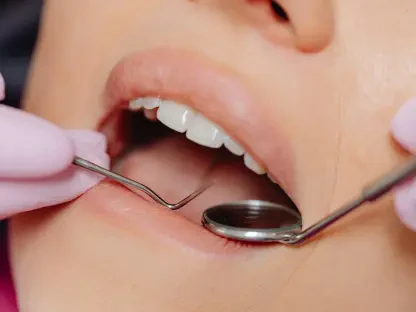Imagine a healthcare system where a simple toothache spirals into a costly emergency room visit, not because of a lack of medical care, but due to the systemic oversight of dental health, leaving millions of Americans, especially low-income and vulnerable populations, grappling with severe pain, lost productivity, and staggering medical bills. This scenario is all too common, highlighting a critical gap in current policies. The American Dental Association (ADA), representing over 150,000 dentists, has recently made a compelling case to lawmakers, emphasizing that oral health cannot be separated from overall well-being. Their urgent call to integrate dental care into national health cost reform strategies underscores the need for action. Ignoring this connection perpetuates preventable diseases and drives up expenses that could be mitigated through strategic reforms. This pressing issue demands attention, as the consequences of neglecting oral health ripple through both individual lives and the broader economy, underscoring the need for immediate action.
The Undeniable Link Between Oral and Overall Health
The connection between oral health and general health is not merely a theoretical concept but a well-documented reality with far-reaching implications. Poor dental care often leads to conditions like gum disease, which studies have linked to systemic issues such as heart disease and diabetes. When dental problems go untreated, they frequently result in emergency department visits that burden the healthcare system with costs that could have been avoided through preventive measures. The ADA has pointed out that these preventable conditions disproportionately affect underserved communities, exacerbating health disparities. Beyond physical health, the impact on mental well-being and workplace productivity cannot be ignored, as chronic dental pain hinders daily functioning. Addressing this link within health cost reform is essential to reducing the strain on medical resources while improving quality of life for countless individuals across the nation. This holistic perspective reveals that oral health is not a peripheral concern but a cornerstone of comprehensive healthcare.
Furthermore, the economic toll of neglecting dental care is staggering and often underestimated in policy discussions. Emergency room visits for dental issues, which are far more expensive than routine care, represent a significant drain on public and private healthcare budgets. For many low-income families, the lack of access to affordable dental services means minor issues escalate into major crises, perpetuating cycles of poverty and poor health outcomes. The ADA’s advocacy for integrating oral health into broader reform strategies underscores the potential for substantial cost savings through early intervention. By prioritizing dental care, policymakers can address both the human and financial costs of inaction. This approach not only alleviates individual suffering but also aligns with the goal of creating a more efficient and equitable healthcare system. The evidence is clear: ignoring oral health in cost reform discussions is a missed opportunity to tackle a preventable source of escalating expenses.
Strategies for Integrating Dental Care into Cost Reform
One of the core recommendations from the ADA involves emphasizing prevention and early intervention as fundamental cost-containment strategies. Community-based initiatives, such as water fluoridation and school dental programs, have proven effective in reducing the incidence of dental disease, thereby decreasing the need for expensive treatments down the line. Additionally, redesigning benefit structures to eliminate financial barriers to preventive and diagnostic services ensures that patients seek care before problems worsen. The association also advocates for the removal of outdated annual and lifetime maximums in dental plans, which fail to account for inflation and often leave patients unable to afford necessary care. These proactive measures aim to shift the focus from reactive, high-cost interventions to sustainable, affordable solutions. By embedding prevention into health cost reform, the potential for long-term savings and improved health outcomes becomes a tangible reality for communities nationwide.
Another critical area of focus is increasing transparency and accountability in dental benefit plans to protect consumers and ensure fair allocation of resources. The ADA proposes the implementation of dental loss ratio reporting, which would reveal how premiums are divided between actual benefits and patient cost-sharing. This transparency is vital for holding insurers accountable and ensuring that funds are directed toward patient care rather than administrative overhead. Similarly, reforms in Medicaid, such as comprehensive adult dental coverage and higher federal matching rates, are essential to address access disparities among vulnerable populations. Standardized summaries of dental plans and uniform disclosure of supplemental benefits in Medicare Advantage are also recommended to empower consumers with clear information. These steps collectively aim to build trust in the system while ensuring that dental care remains accessible and affordable, aligning with the broader objectives of health cost reform.
Building a Future with Equitable Dental Access
Looking ahead, supporting tax policies that ease the financial burden of dental care on families and small practices is a pivotal aspect of reform. The ADA endorses the continued use of Health Savings Accounts (HSAs) and Flexible Spending Accounts (FSAs) to help cover costs, while cautioning against new taxes on dental services or employer-sponsored benefits that could increase expenses for patients. Such policies are crucial for maintaining affordability, especially for small dental practices that often struggle under financial pressures. By safeguarding these mechanisms, lawmakers can ensure that dental care does not become an out-of-reach luxury for many Americans. This forward-thinking approach highlights the need for a balanced strategy that supports both providers and patients in navigating the complexities of healthcare costs, paving the way for a more inclusive system.
Reflecting on past efforts, it became evident that actionable steps taken by policymakers and stakeholders had laid a foundation for meaningful progress in integrating oral health into national strategies. The emphasis on prevention, transparency in benefit plans, and Medicaid improvements had started to show promise in reducing the economic burden of preventable dental issues. Collaborations between dental associations and legislative bodies had fostered a dialogue that prioritized accessibility for vulnerable populations. As these initiatives gained traction, the focus shifted toward refining tax policies and benefit designs to sustain long-term affordability. The journey underscored a growing recognition that dental care was not a standalone issue but an integral part of health equity. Moving forward, continued commitment to these reforms was seen as vital to ensuring that every individual could access the care needed to maintain both oral and overall health, ultimately shaping a more resilient healthcare framework.









